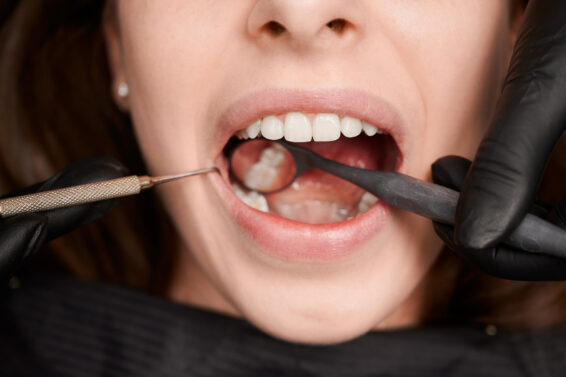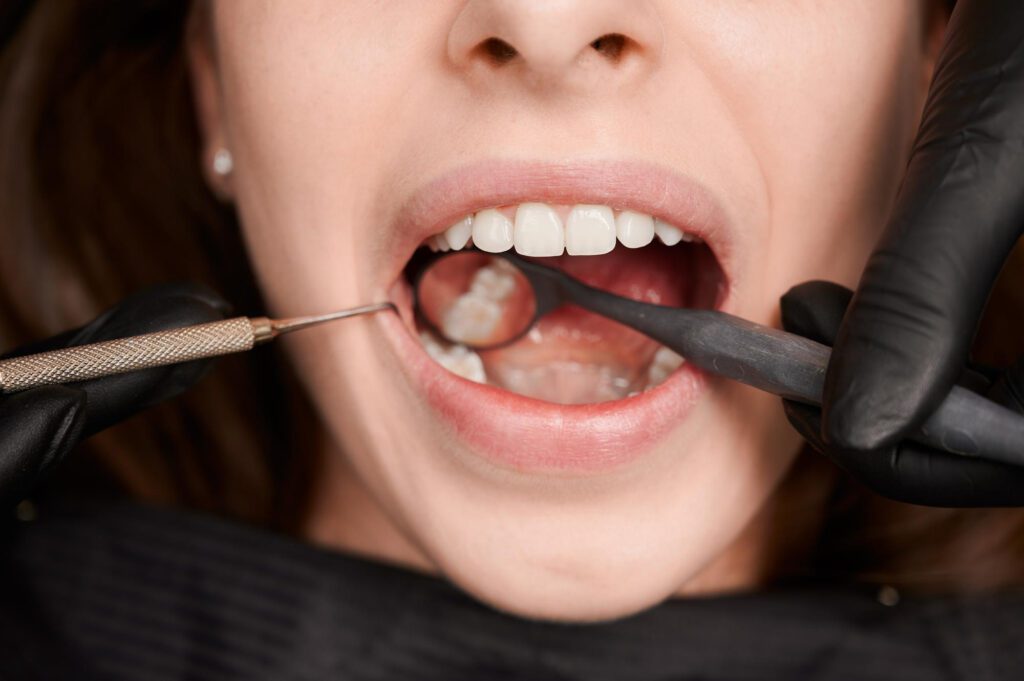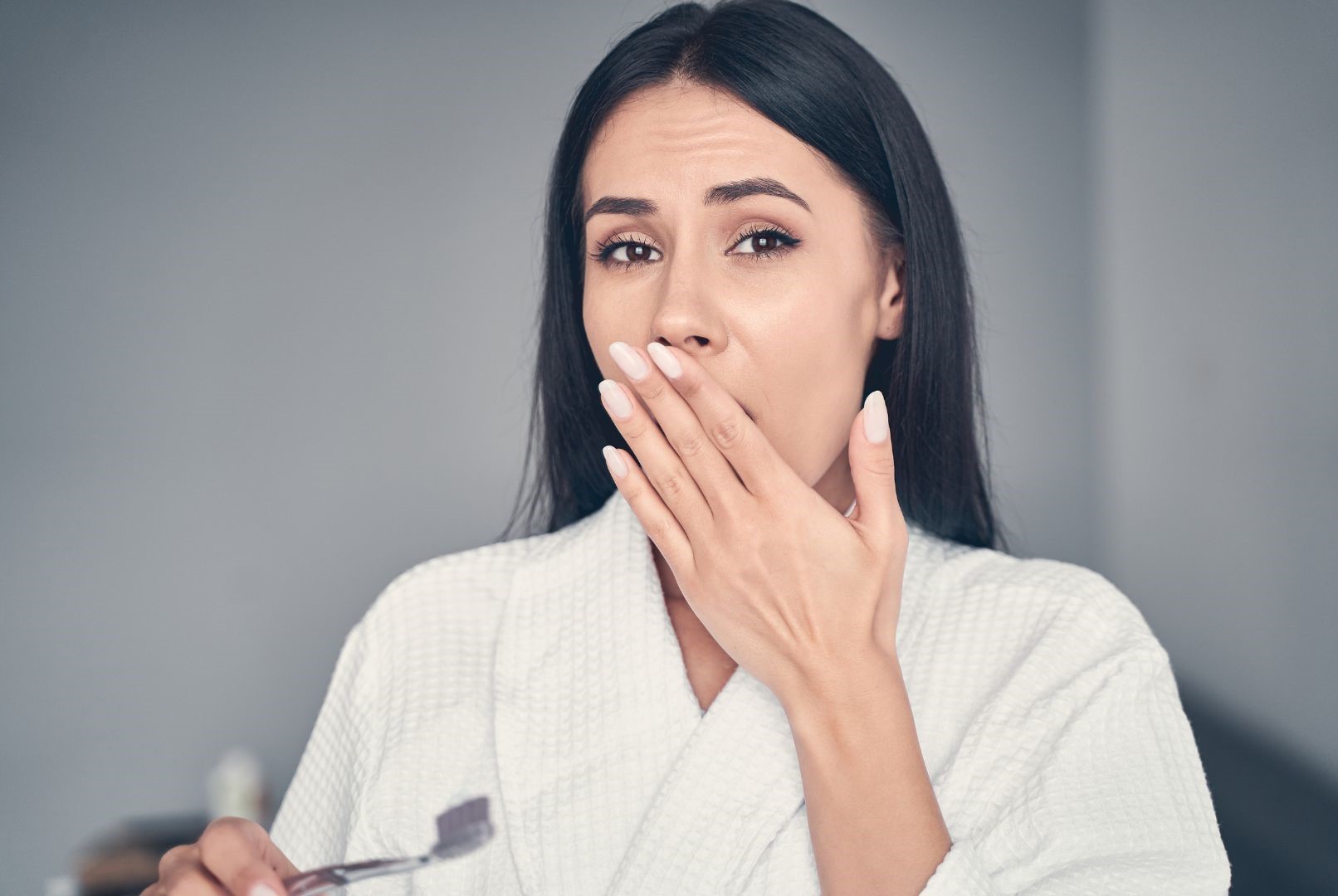Can Enzyme Toothpastes Improve Saliva Quality?
In the quest for optimal oral hygiene, the role of saliva in maintaining oral health cannot be overstated. Saliva is instrumental in neutralizing acids, aiding in digestion, and preventing tooth decay and periodontal diseases. As such, the quality of saliva is a critical component of overall oral health. Recent innovations in oral care, such as enzyme toothpastes, promises to enhance salivary quality and function, potentially offering a new frontier in the prevention of caries, dry mouth, and other oral health issues. These products leverage the natural properties of enzymes to bolster the salivary defenses against dental plaque and caries, suggesting an exciting evolution in tooth brushing and oral care practices.

This article delves into the science behind enzyme toothpastes and their purported benefits for saliva. It begins by exploring what enzyme toothpastes are and how they are designed to improve oral health. Following that, the discussion moves to the pivotal role of saliva in oral hygiene, detailing how these innovative toothpastes may influence the composition and quality of saliva. Through a review of scientific studies and findings, the article assesses the efficacy of enzyme toothpastes in enhancing salivary functions, addressing dry mouth, and supporting the remineralization process. Lastly, it draws a conclusion on whether these toothpastes fulfill their promise of improving saliva quality, offering readers a comprehensive insight into their potential impacts on oral health.
Understanding Enzyme Toothpastes
Enzyme toothpastes incorporate specific proteins that enhance oral health by supporting the natural defense mechanisms of saliva [5] [7]. These toothpastes utilize enzymes like glucose oxidase (GOX) and lactoperoxidase (LPO), which play crucial roles in the nonspecific immune response within the oral cavity [5]. GOX aids in the production of hydrogen peroxide, which, in the presence of thiocyanate (SCN−), is used by LPO to produce antimicrobial agents that combat cariogenic bacteria [5].
The effectiveness of these enzyme-containing toothpastes has been demonstrated through various clinical studies. These studies have shown a shift in the oral microbiome towards healthier conditions, reducing plaque and gingivitis significantly when compared to standard toothpastes [5]. Additionally, the enzyme formulations are designed to ensure that the enzymatic activity is preserved during production and activated only during brushing, maximizing the health benefits [5].
Furthermore, enzyme toothpastes like Darlie All Shiny White Enzyme Toothpaste utilize natural enzymes such as papain and glucanase. Papain breaks down proteins and helps in removing biofilms, while glucanase assists in breaking down glucans, reducing the adherence of stains on teeth [6]. This dual enzyme action not only helps in maintaining oral hygiene but also enhances the aesthetic appeal by whitening teeth and preventing stain buildup [6].
The Role of Saliva in Oral Health
Saliva is pivotal in maintaining oral health, serving both protective and functional roles. It is primarily composed of water, but also contains essential electrolytes, proteins, and enzymes that contribute to its diverse functions [11]. The major salivary glands—submandibular, parotid, and sublingual—produce most of the saliva, which is crucial for lubricating oral tissues and aiding in digestion [11].
Components and Functions of Saliva
Saliva performs several critical functions:
- Protection of Oral Tissues: It lubricates and moisturizes the oral cavity, dilutes sugars, and provides antimicrobial action that degrades bacterial cell walls. This helps in neutralizing acid production and controlling plaque pH, thus protecting against tooth decay and gum disease [11].
- Remineralization: Saliva facilitates the remineralization of enamel by supplying calcium, phosphates, and fluoride, which are vital for maintaining tooth integrity [11].
- Digestion and Taste: It contains enzymes like amylase that break down starches, enhancing digestion and taste [12].
- Oral Hygiene: Continuous saliva flow helps to cleanse the mouth and dislodge food particles, reducing the risk of dental caries and periodontal diseases [12].
Saliva and Oral Microbiome
Saliva also plays a crucial role in shaping the oral microbiome. It acts as a medium that supports the growth of beneficial oral bacteria while controlling populations of harmful bacteria through its antimicrobial components like lysozymes and lactoferrin [16]. These components inhibit bacterial growth and promote the aggregation of bacteria, preventing them from adhering to oral surfaces and causing disease [16].
Furthermore, saliva’s diagnostic potential is significant, as it contains markers that can indicate oral and systemic health conditions, making it a valuable tool in medical diagnostics [11]. Changes in saliva composition and flow can signal underlying health issues, such as Sjögren’s syndrome or diabetes, which may require medical attention [12] [16].
Overall, the multifunctional nature of saliva underscores its importance in oral health, influencing everything from dental caries prevention to the diagnosis of systemic diseases.
How Enzyme Toothpastes Affect Saliva

Saliva’s Mechanism of Action
Enzyme toothpastes leverage the lactoperoxidase (LPO) system, a critical defense mechanism of saliva. This system operates by utilizing hydrogen peroxide to oxidize thiocyanate into hypothiocyanite, an antimicrobial agent. Hydrogen peroxide, necessary for this reaction, is produced by both salivary glands and certain oral bacteria. Enzyme toothpastes, which often contain glucose oxidase (GOX), facilitate the production of hydrogen peroxide, enhancing the LPO system’s effectiveness in combating oral pathogens [11][12][13][14].
Impact on Saliva Composition
The introduction of enzyme toothpastes has been shown to alter the oral microbiome towards a healthier state. Clinical studies indicate that these toothpastes not only reduce levels of harmful bacteria but also promote a balance in the oral ecosystem, thus supporting overall oral health. Key components like lysozyme and lactoferrin, present in some enzyme toothpastes, provide additional antimicrobial actions. Lysozyme attacks the glycosidic linkages in bacterial cell walls, particularly effective against Gram-positive bacteria, while lactoferrin disrupts the outer membrane of Gram-negative bacteria, enhancing the bactericidal properties of the saliva [6][8][14][15]. Furthermore, the synergistic action between these enzymes and other salivary components fosters a robust antimicrobial environment, crucial for preventing oral diseases [6][8][14][15].
Scientific Studies and Findings
Relevant Research and Data
Recent studies have demonstrated the efficacy of enzyme-containing toothpastes in enhancing the natural salivary defenses, leading to a healthier oral microbiome. A notable study reported that toothpaste containing enzymes and proteins resulted in an increased abundance of bacteria associated with gum health, while reducing those linked to periodontal disease [26]. Specifically, the study observed a significant shift in the oral microbiome, with an increase in 12 health-associated taxa and a decrease in 10 taxa linked to periodontal disease [26]. This shift is consistent with the enzymatic action within the toothpaste, particularly highlighting the role of enzymes like glucose oxidase and lactoperoxidase in promoting oral health [26].
Furthermore, the same study noted that organisms such as Neisseria species, which are aerobes generally associated with a healthy oral environment, saw an increase in relative abundance. This suggests that the enzymatic action of the toothpaste not only combats harmful bacteria but also supports beneficial oral bacteria [26].
Case Studies
One case study involved the Zendium toothpaste, which contains naturally occurring enzymes and proteins. This toothpaste was shown to significantly increase the levels of health-associated organisms in dental plaque over time, while reducing disease-associated organisms compared to a control toothpaste [26]. This was attributed to the toothpaste’s ability to enhance the natural defenses of saliva, particularly through the production of hydrogen peroxide which increases oxygen concentration in the mouth, inhibiting the growth of anaerobic species [26].
Another study tested a toothpaste formulated with enzymes and proteins reflecting those in saliva, which play a crucial role in maintaining bacterial balance. Over 13 weeks, this toothpaste demonstrated significant improvements in gingival health and reduced plaque formation compared to a commercial fluoride toothpaste [30]. This was linked to the augmentation of the salivary peroxidase system, a key defense mechanism in the oral cavity [30].
These findings underscore the potential of enzyme toothpastes to significantly impact oral health by modifying the oral microbiome and enhancing the natural protective functions of saliva.
Conclusion
Through the exploration of enzyme toothpastes and their impact on saliva quality, this article has unveiled how these innovative products support oral health by enhancing salivary functions. By integrating enzymes that bolster the mouth’s natural defenses against harmful bacteria, enzyme toothpastes offer a promising approach to improving oral microbiome health, potentially reducing the risk of dental caries and gum disease. Scientific studies underscore their effectiveness in not only combating pathogens but also in fostering a healthier oral ecosystem, marking a significant step forward in daily oral care practices.
The implications of these findings are far-reaching, suggesting that incorporating enzyme toothpaste into our oral hygiene regimen could play a pivotal role in maintaining oral health. It encourages a shift towards preventive oral care, highlighting the importance of saliva quality in our overall well-being. As we continue to seek improved methods for oral care, further research into enzyme toothpastes will be essential. Their potential to enhance saliva’s protective functions opens up new avenues for preventing oral health issues, reinforcing the significance of embracing innovative solutions in our daily routines.
FAQs
- What are the advantages of using enzymatic toothpaste?
Enzymatic toothpaste helps combat microorganisms and prevent the formation of biofilm. Although it may not match the effectiveness of professional treatments, enzymatic toothpaste that includes whitening agents can effectively remove stains and prevent future discoloration by inhibiting plaque biofilm accumulation. - What role do enzymes play in toothpaste?
Enzymes in toothpaste are crucial for supporting the body’s immune responses in the mouth, thereby maintaining oral health. Studies have shown that enzyme-containing toothpastes can improve gingival health and reduce plaque, thanks to their antimicrobial properties.
References
[1] – https://pubmed.ncbi.nlm.nih.gov/36870327/
[2] – https://www.nature.com/articles/srep43344
[4] – https://www.colgate.com/en-us/oral-health/selecting-dental-products/how-does-enzymatic-toothpaste-work
[5] – https://www.ncbi.nlm.nih.gov/pmc/articles/PMC7835853/
[6] – https://www.darlie.com.sg/en/products/all-products/all-shiny-white-supreme-enzyme-whitening-toothpaste
[7] – https://www.ncbi.nlm.nih.gov/pmc/articles/PMC7835853/
[8] – https://www.colgate.com/en-us/oral-health/selecting-dental-products/how-does-enzymatic-toothpaste-work
[10] – https://pubmed.ncbi.nlm.nih.gov/16878065/
[11] – https://www.nature.com/articles/bdjteam2015123
[12] – https://oldmtpleasantdentistry.com/why-is-saliva-so-important-to-your-overall-oral-health/
[13] – https://www.intechopen.com/chapters/66233
[14] – https://pubmed.ncbi.nlm.nih.gov/23464573/
[15] – https://www.sciencedirect.com/science/article/pii/S0022391301540329
[16] – https://www.ncbi.nlm.nih.gov/pmc/articles/PMC10535076/
[17] – https://pubmed.ncbi.nlm.nih.gov/26662484/
[18] – https://www.nature.com/articles/s41522-022-00343-7
[19] – https://www.ncbi.nlm.nih.gov/pmc/articles/PMC7835853/
[20] – https://www.ncbi.nlm.nih.gov/pmc/articles/PMC7781222/
[21] – https://www.nature.com/articles/srep43344
[22] – https://pubmed.ncbi.nlm.nih.gov/36870327/
[23] – https://www.ncbi.nlm.nih.gov/pmc/articles/PMC7835853/
[24] – https://www.nature.com/articles/srep43344
[25] – https://pubmed.ncbi.nlm.nih.gov/36870327/
[26] – https://www.nature.com/articles/srep43344
[27] – https://www.sciencedirect.com/science/article/pii/S0300571218306560
[28] – https://www.sciencedirect.com/science/article/pii/S0300571218306560
[29] – https://pubmed.ncbi.nlm.nih.gov/36870327/
[30] – https://research-information.bris.ac.uk/files/184567329/A_randomised_clinical_trial_to_determine_the_effect_of_a_toothpaste_final.pdf
[31] – https://www.ncbi.nlm.nih.gov/pmc/articles/PMC10959611/
[32] – https://www.sciencedirect.com/science/article/pii/S0300571218306560
[33] – https://www.nature.com/articles/srep43344


